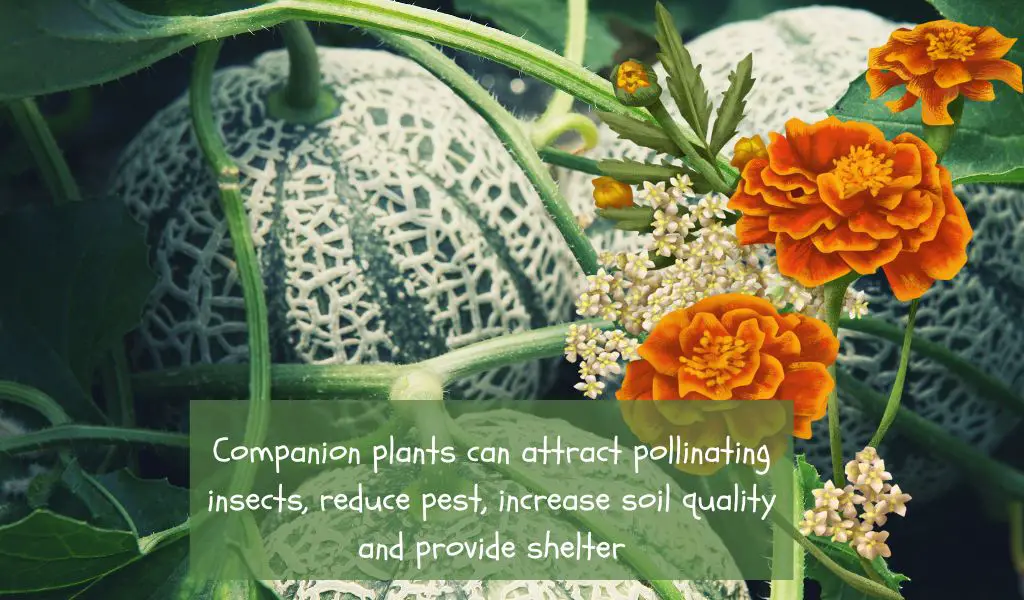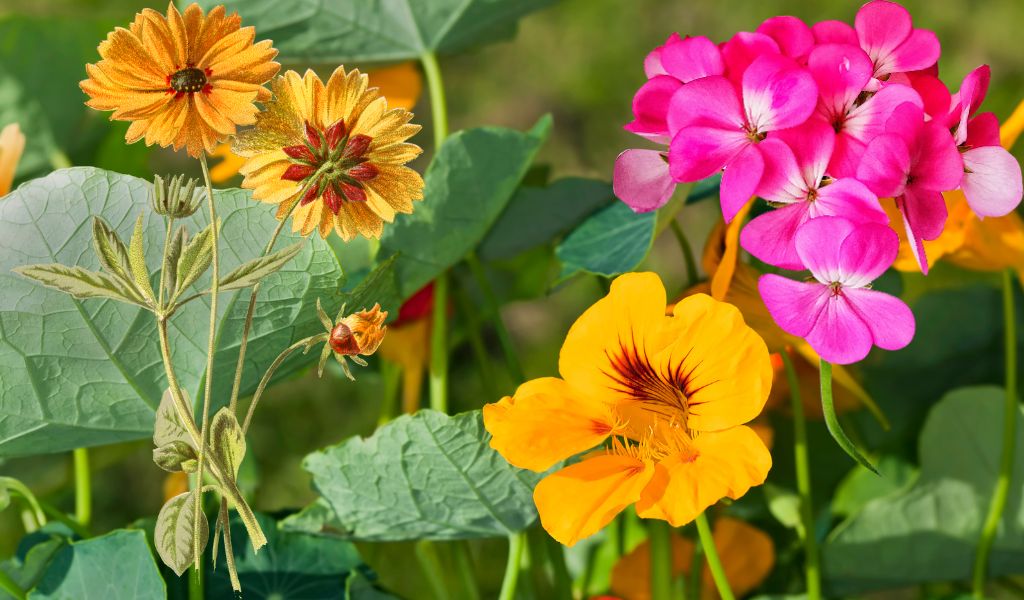Growing cantaloupe in your garden can be a delightful experience, especially when you harvest those sweet, juicy fruits.
One way to ensure a healthy, productive cantaloupe crop is by practicing companion planting.
This method involves planting certain species close to your cantaloupes that can benefit each other in various ways.
Benefits of Companion Planting
Companion planting offers multiple advantages for your cantaloupe plants and the overall health of your garden. Here are some of the primary benefits:
Pest Control
Companion plants can deter or attract pests away from your cantaloupes, helping to reduce the need for chemical pesticides.
Soil Enrichment
Some companion plants improve soil quality by adding essential nutrients, which can enhance cantaloupe growth and yield.
Increased Yield
When done correctly, companion planting can increase the yield of your cantaloupe plants by providing optimal growing conditions.

Top Cantaloupe Companion Plants
There are several great companion plants that can support the growth and health of your cantaloupe plants. Here are some of the best options:
Sunflowers
Sunflowers can provide shade for your cantaloupe plants, protecting them from the harsh afternoon sun.
The large, sturdy stalks also offer a natural trellis for cantaloupe vines to climb, reducing the risk of fruit rotting on the ground.
Corn
Corn can serve a similar purpose as sunflowers, providing shade and support for cantaloupe plants.
In addition, corn can act as a windbreak, shielding cantaloupes from strong winds that may damage their delicate vines.
Radishes
Radishes deter pests, such as cucumber beetles and aphids, which can harm cantaloupe plants.
Additionally, radishes have a fast growth rate and can be harvested before the cantaloupe plants require more space.
Beans and Peas
Legumes like beans and peas can fix nitrogen in the soil, providing essential nutrients for cantaloupe growth.
In turn, the cantaloupe plants can offer support for the legume vines to climb.
Marigolds and Nasturtiums
Both marigolds and nasturtiums repel pests like aphids and whiteflies, which can damage cantaloupe plants.
As an added bonus, these flowers add a splash of color to your garden, making it visually appealing.
Lettuce and Spinach
Lettuce and spinach are excellent companions for cantaloupes because they have shallow root systems and can be grown in the same area without competing for nutrients.
These leafy greens also create a living mulch, helping to retain soil moisture and suppress weeds.
Companion Planting Tips
To get the most out of your cantaloupe companion plants, consider the following tips:
Spacing
Be mindful of the space requirements for each plant, ensuring they have enough room to grow without competing for resources.
Proper spacing will also promote good air circulation, reducing the risk of diseases.
Watering and Fertilizing
Different plants have varying water and nutrient needs.
Be sure to provide the appropriate amounts of water and fertilizer for each plant species, ensuring that your cantaloupe and its companions thrive.
Rotating Crops
Rotate your crops each year to prevent the buildup of pests and diseases in the soil.
This practice can also help maintain soil fertility and prevent nutrient depletion.
FAQs
What should I avoid planting near cantaloupes?
Avoid planting potatoes and cucumbers near cantaloupes, as they can attract pests and diseases that can affect cantaloupe plants.
Can I plant multiple companion plants together with cantaloupes?
Yes, you can plant several companion plants together with cantaloupes, creating a diverse and healthy garden ecosystem.
How do I know when my cantaloupes are ready to harvest?
Cantaloupes are ready to harvest when they develop a strong, sweet aroma and the stem easily detaches from the fruit.
Do cantaloupes require trellising or support?
While trellising is not required for cantaloupes, providing support can help keep the fruit off the ground, reducing the risk of rot and disease.
When should I plant cantaloupes and their companion plants?
Plant cantaloupes and their companions after the last frost when soil temperatures are consistently above 60°F (15°C) to ensure optimal growth.
Conclusion and final thoughts 💭
Companion planting is a fantastic way to improve the health and productivity of your cantaloupe plants while benefiting your entire garden.
By choosing the right companion plants like sunflowers, corn, radishes, beans, peas, marigolds, nasturtiums, lettuce, and spinach, you can enjoy a bountiful harvest of delicious cantaloupes.




